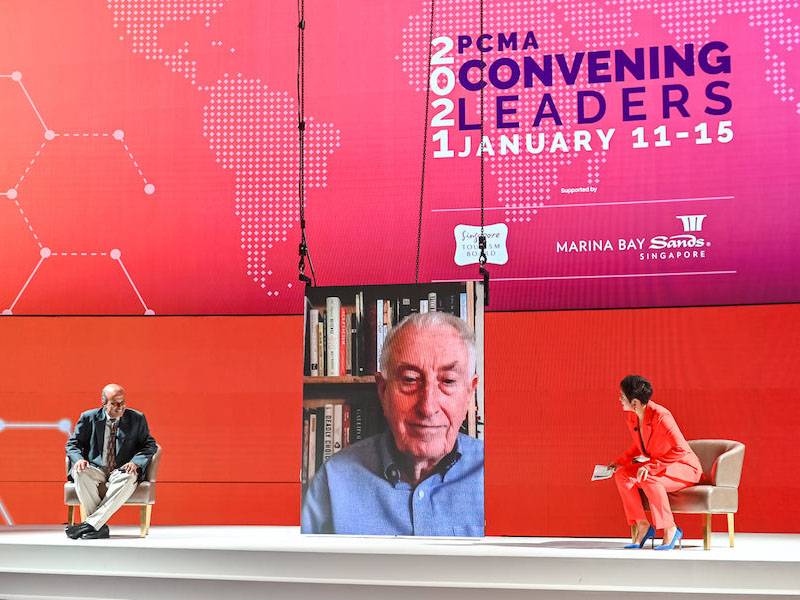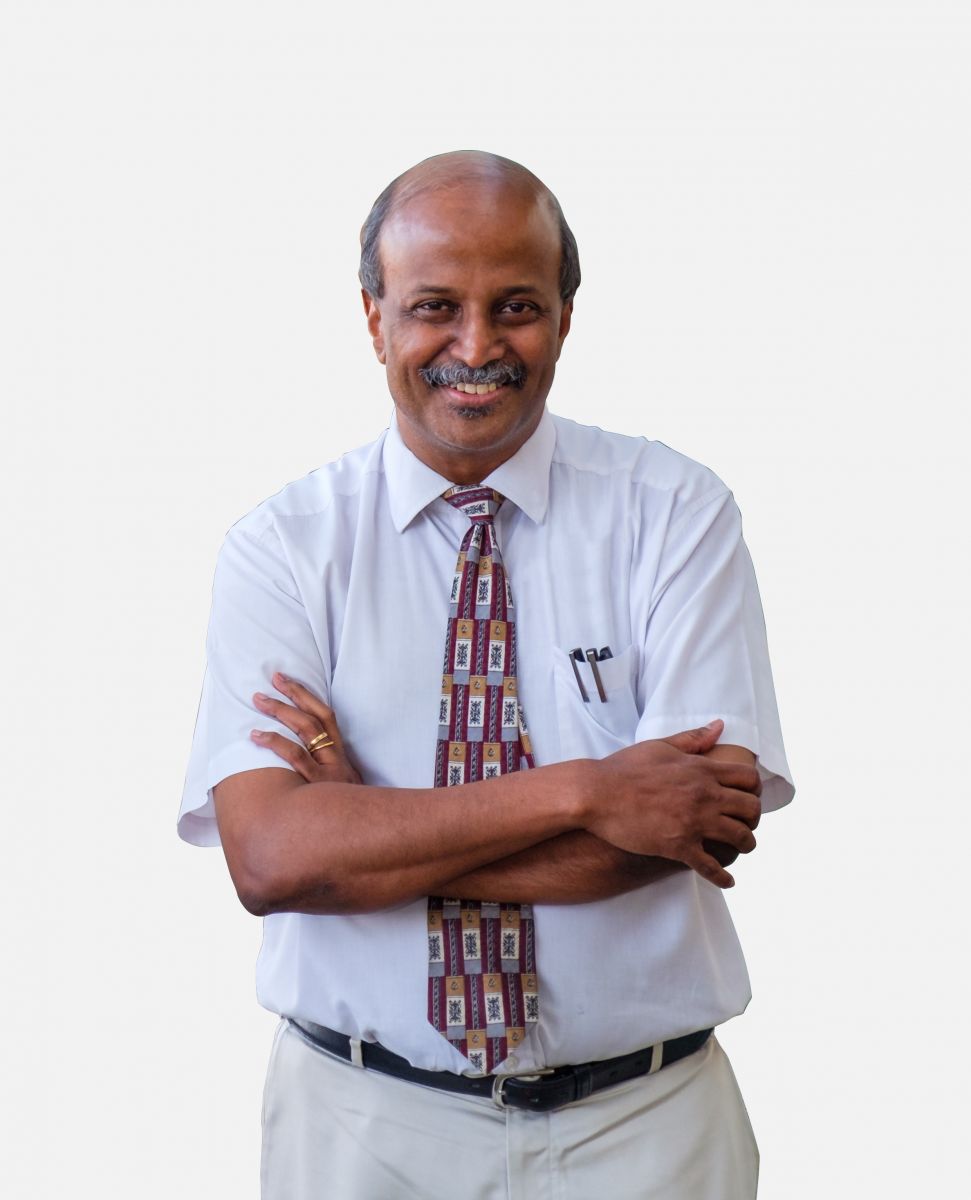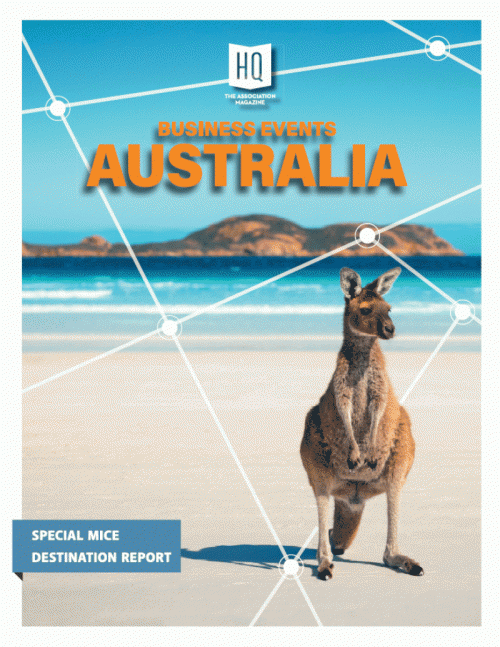Paul Tambyah: “We will probably never return to what it was like in 2019

After a gloomy year, the first vaccines are starting to pop up and with them a frantic race for national distribution everywhere. In the platoon of industries eager for the rapid spread of vaccination, last January PCMA Convening Leaders 2021 set the tone for a broad exposition on these findings with a panel of medical experts. We asked Paul Tambyah, President-Elect of the International Society of Infectious Diseases, how far we are from the retrieval of the business events industry.
1) How do you assess the global and political reaction to the pandemic?
What surprised me positively was the way that many low and middle income countries responded to the pandemic with relatively little help from high income countries. Looking at all numbers, many countries in Sub-Saharan Africa are defying predictions made early that they would be devastated on a scale similar to what happened with the West African ebola outbreak. Indeed, the lessons learned from ebola have translated into trained personnel and locally developed diagnostic and public health resources in the AFRO region. These have certainly helped the region control the pandemic. Although it is possible that they were lucky for biological or climate reasons, we cannot take away from the hard work by African doctors and scientists. On the other side, I think that scientists collectively have failed in that there is still a lot that we do not know about the virus that we could potentially do with the right experiments or epidemiological studies. To date, I haven’t seen a single case-control study to try to explain why there are super spreading events in some bars and religious gatherings and not in many other almost identical situations. I think that as a scientific community, we have neglected some of the fundamental questions which could have shaped the response for everyone.
2) How will medicine and science manage to contain infectious diseases in a hyper-connected society?
I think that the biggest difference between both H1N1 influenza pandemics (1918 and 2009) is the power of social media for good and for evil. The first news of this novel virus appeared on Chinese social media platforms before the official confirmation. The announcement of the genetic sequence of the virus was made on twitter and many positive findings and educational messages have gone across various social media platforms. At the same time, a lot of misinformation, scare mongering and even vilification of certain groups of people has been amplified on social media. I think that scientists and doctors, with a few notable exceptions, are not good at communicating with the public. We need to be able to respond to the questions behind public anxiety and provide accurate answers while admitting gaps in what we know. More importantly, I think that we need to admit that we were wrong when science advances and our initial hypotheses are proved inaccurate. I think that the public will accept sincerity and in general does not like being talked down to.
3) How challenging is it for ISID to educate new audiences about the risks of infectious diseases within a flood of contradictory information?
 It is extraordinarily challenging for ISID as our members come from across the world. We have an excellent secretariat and a new platform which allows us to disseminate accurate information online. We have Spanish language materials and we are translating our guide to infection control into multiple other languages. However, our reach is currently a fraction of some of the world’s most famous influencers or celebrities who may have some rather strange views about infectious diseases. One challenge that we really have to tackle in the coming months is to remind people that scientists can disagree in a civil way and based on evidence rather than personal and speculative. A classic example of this was the two competing polio vaccines promoted by Salk and Sabin both of which, eventually, turned out to be necessary to eradicate polio. As the pandemic begins to ease off, we really need to objectively examine the data and help the public draw the right lessons so we do not make the same mistakes the next time around – and there will be a next time!
It is extraordinarily challenging for ISID as our members come from across the world. We have an excellent secretariat and a new platform which allows us to disseminate accurate information online. We have Spanish language materials and we are translating our guide to infection control into multiple other languages. However, our reach is currently a fraction of some of the world’s most famous influencers or celebrities who may have some rather strange views about infectious diseases. One challenge that we really have to tackle in the coming months is to remind people that scientists can disagree in a civil way and based on evidence rather than personal and speculative. A classic example of this was the two competing polio vaccines promoted by Salk and Sabin both of which, eventually, turned out to be necessary to eradicate polio. As the pandemic begins to ease off, we really need to objectively examine the data and help the public draw the right lessons so we do not make the same mistakes the next time around – and there will be a next time!
4) How can vaccination impact the life of associations and reshape the global business events landscape?
A number of us from the society have argued that the key is to use existing approaches, in particular the WHO certificate of vaccination (the ‘Yellow book’) to enable the rapid return of international travel and business. The key is that the vaccines have to work! We will know that very soon with data emerging from countries with very high vaccination rates such as Israel and the United Arab Emirates. If the numbers of infected individuals and deaths plummet in those countries, then vaccination rates will take off worldwide and there is a good chance that we will move closer to what we had before the pandemic. We will probably never return to what it was like in 2019 but hopefully we will get close.
5) How did you and your members feel about the prospect of holding the Convening Leaders 2021?
I thought that the organisers did an amazing job given all the regulations and constraints. I was particularly tickled to have a giant screen lowered in between myself and the host, featuring Prof Peter Doherty from his home office in Melbourne as we did our panel discussion. The swabbing and testing procedures were complex but run pretty efficiently. Although I think that the limitations on interactions diminished the experience for most attendees, I could tell that many were happy to have these limited interactions after months of online meetings. One of the main reasons I attend international scientific meetings is the opportunity to network and interact with colleagues and collaborators from across the world, often at random and not necessarily dictated by safe management measures. For a society like ISID with many members from low and middle income countries, a lot of these restrictions would make attendance at a conference like the recent Singapore meeting very challenging.
6) Do you agree that COVID-19 has definitely left a mark for future generations by changing habits and behavior patterns?
It is very hard to tell what is going to happen based on historical precedents as there probably has not been something like this since the middle ages. Mortality rates from the plague were much higher but business life was disrupted almost as badly. I think that the biggest changes will be in the area of building design with crowded meeting rooms and bars probably a thing of the past. There will be more access to sanitary facilities and hopefully better ventilation and natural lighting at convention centres. I am personally more afraid of what comes next. The current pandemic will end in the next few weeks or months but if a new strain of influenza emerges next year, the question is whether we will all feel compelled to repeat the same intensity of lockdowns and travel restrictions while we wait for a vaccine. I sincerely hope not! We need some kind of silver bullet to protect us from these new emerging pathogens as it is almost certain that they will appear. PROMED is ISID’s early warning system and hopefully the clever people who have designed many of the technologies used in this pandemic will study PROMED to better prepare us for the next big one.
Other Articles
About Us
Supported by the Union of International Associations (UIA), the International Association of Professional Congress Organisers (IAPCO) and the Interel Group, the global public affairs and association management consultancy, Headquarters Magazines serve the needs of international associations organising worldwide congresses.














